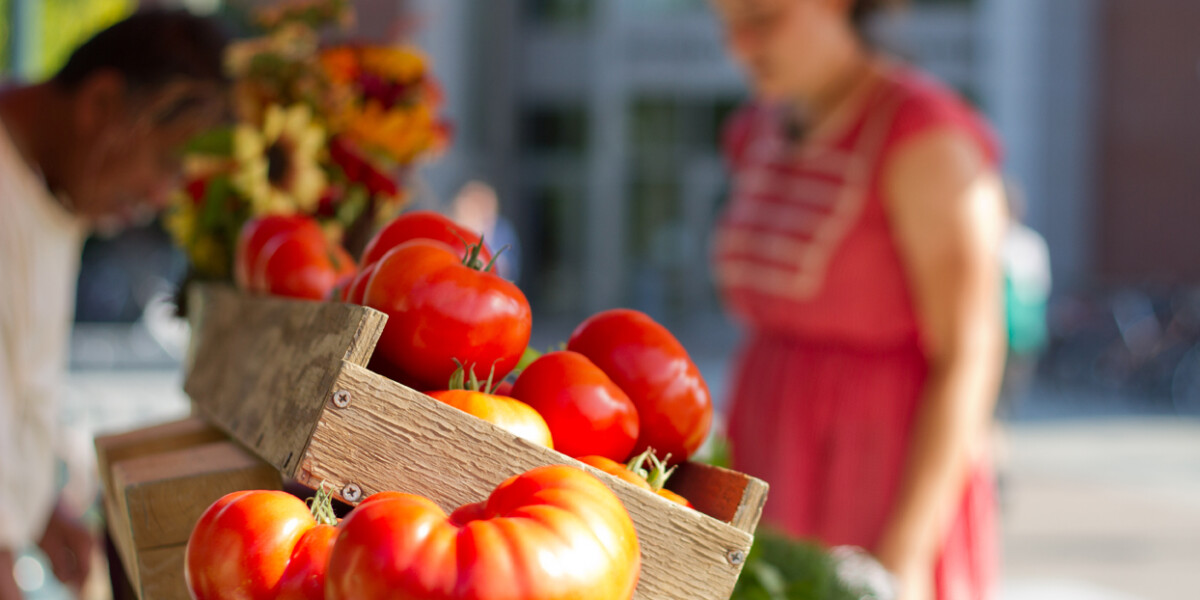For the first time in U.S. history, the production and distribution of fruits and vegetables will be regulated by the federal government in an effort to prevent foodborne illness related to the contamination of produce. The Food Safety Modernization Act of 2011, the most sweeping reform of food safety laws in more than 70 years, gives the Food and Drug Administration the responsibility to write the produce safety rules that growers and processors must follow.
Yet it’s still unclear how those regulations might affect Vermont growers and consumers.
“Produce has never been regulated, so this is completely new for the produce industry,” according to Lynn Zanardi Blevins, M.D., M.P.H., a medical epidemiologist and clinical assistant professor of medicine at the University of Vermont. She teaches courses in UVM’s online public health certificate program and collaborates with UVM Extension faculty on produce safety projects.
Blevins understands Vermont growers’ concerns; they believe the FDA rules are designed for large-scale agriculture, not the small farms of the Green Mountain State. They fear “the produce rules will put them out of business.”
Yet after having worked for 10 years for the Centers for Disease Control and Prevention (CDC), she also recognizes that “food safety is a concern for every farm. Growers try to prevent pathogens from getting on the produce in the first place. For example, they need to pay attention to when they spread manure, allowing sufficient time before harvest. Workers need to wash their hands, not work when they are sick, and not handle food when they have an exposed and open cut.”
Unpacking the risks of food contamination can be complicated. For starters, 68 percent of outbreaks have been traced to food from restaurants or delis versus only 9 percent linked to food from private homes, according to the CDC. And though an estimated 46 percent of cases are attributable to produce, those cases tend to be less severe than foodborne illness associated with other commodities such as poultry. Leafy greens – because they are usually eaten raw – are the most common source of produce contamination, the CDC says.
The UVM Extension Center for Sustainable Agriculture’s Produce Safety Program therefore works closely with growers to be proactive about produce safety, Blevins says. “We say to growers, ‘Let’s implement the practices appropriate for the scale of our small and diversified farms as a way of protecting our very thriving local food system.’ ”
With produce-related foodborne outbreaks featured in the media, consumers might be confused by what’s safe to eat – and what isn’t. Blevins offers these clarifications regarding produce safety, no matter how the new federal regulations are implemented in Vermont:
- Your chances of getting sick from produce are really low, considering how much you eat every day. “The reality is: Produce has gotten a lot of attention lately because of the large produce-related multi-state foodborne outbreaks, such as those related to spinach and cantaloupe, that have been investigated by the CDC,” Blevins says. “Your chances of getting sick from produce are very low, only slightly more than being struck by lightning. The benefits of incorporating fruits and vegetables in your diet far outweigh the risks from getting sick from a foodborne illness.”
- The scale of the farm – and the way it handles produce – can make a difference. Large-scale agriculture has several features that increase the likelihood of widespread outbreaks, Blevins points out. In particular, the additional processing required for ready-to-eat produce – such as bagged lettuce – and co-mingling of large quantities of produce in packing and processing facilities increase the chances of cross-contamination on a potentially large scale. Longer storage and transportation time increase the possibility of improper handling somewhere along the line, potentially giving microbes the opportunity to multiply. Similar precautions must be taken at a small farm, but the scale is different. The wash systems are different; so are the distribution systems. Both types of agriculture require preventive measures, but the specifics need to be appropriate to farm type and size, Blevins says.
- If you aren’t hearing about outbreaks, that doesn’t mean no one is getting sick.
Outbreaks involving large-scale farms get the attention because they involve hundreds of people across several states. It all has to do with numbers; there are enough people going to the doctor and getting tested; there are enough positive tests to make a connection. “It’s in the news, and people say, ‘Oh, I had that,’ and then they go to the doctor, and the reported outbreak gets larger,” Blevins explains. “With Vermont’s small scale, it would be harder to detect an outbreak. Even when you do get sick, it can be very difficult to determine which of the numerous foods you ate over the last week or so is the culprit.”
- What you ate last night – or several hours ago – is not necessarily the cause of your food poisoning. “When people have a diarrheal illness, they immediately look to the meal they had immediately before their symptoms started,” Blevins says. “It can be the case, but it’s not the most common scenario.”When it comes to food contamination, bacteria such as Staphylococcus aurous can produce toxins that result in illness within a few hours, but others – such as E. coli, Salmonella or Listeria – have an incubation period of days or even weeks. “So it makes it really difficult to determine which food is the culprit, especially if there is no one else in your community who is sick,” Blevins explains. “In order to make the connection between illness and a particular food, health officials need at least two reported cases to make the association.”
- Washing produce won’t necessarily eliminate contaminants. “Washing produce is not shown to remove bacteria. Think about a raspberry. Are you going to wash that?” she asks. “I’m not saying it’s not worthwhile; if you can see grit on your produce, that can be washed away. But consumers need to recognize that if there are bacteria adhering to the lettuce, washing that lettuce is not going to wash away the bacteria.” Blevins still encourages growers, however, to triple-wash leafy greens to eliminate dirt that might contain contaminants. “Each time you dunk the lettuce, you reduce the amount of contaminants in the water. Many growers add a sanitizer to the water to reduce pathogen survival.”
- Temperature control is key – and the primary aspect over which consumers have control. Refrigerating produce as soon as possible – the CDC says within two hours after purchase – greatly slows bacterial growth and makes it less likely you’ll get sick if there are any pathogens present. “The argument that you can leave produce in a hot car because you’re going to wash it later – that’s not true,” Blevins says. “A small amount of bacteria can turn into a large amount of bacteria in a hot car. On a hot day, bring a cooler to the farmer’s market.”
- Avoid contaminating produce in your kitchen. That age-old advice still holds true: Don’t use a cutting board for raw meat and then to chop raw vegetables.




